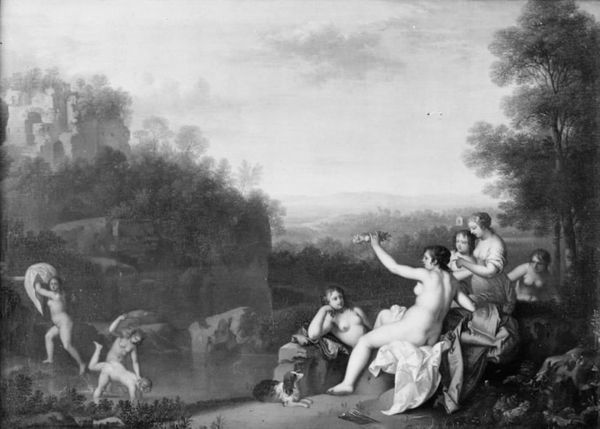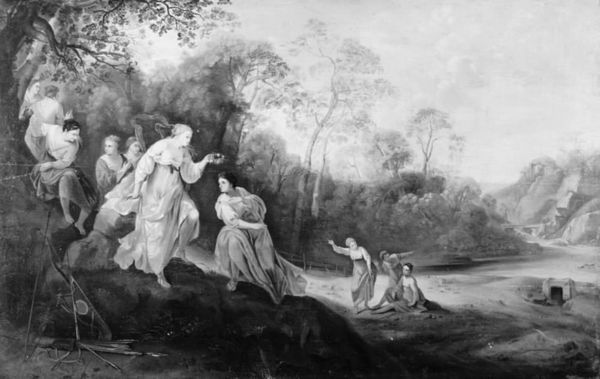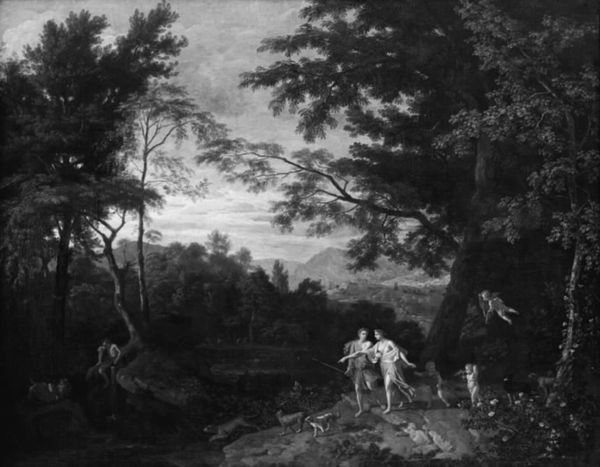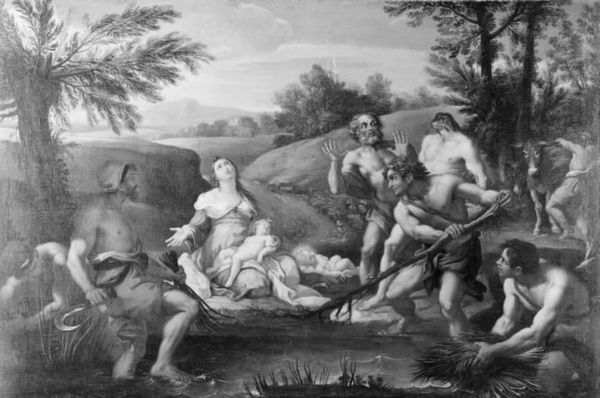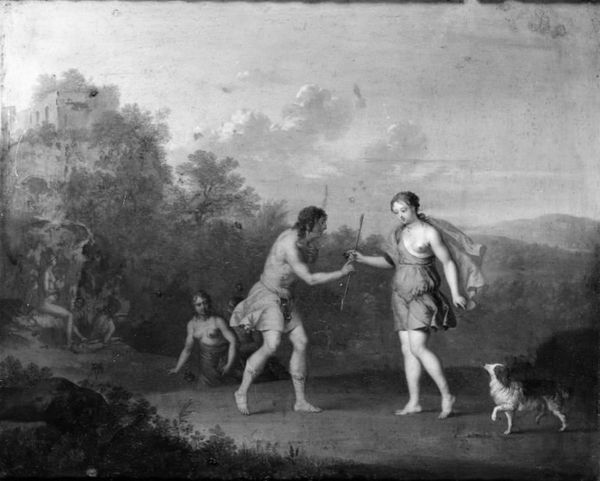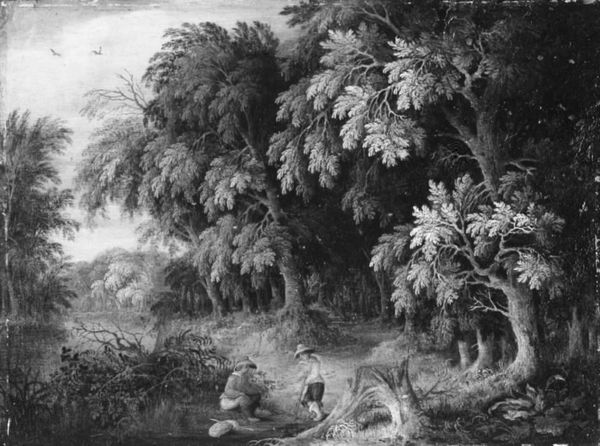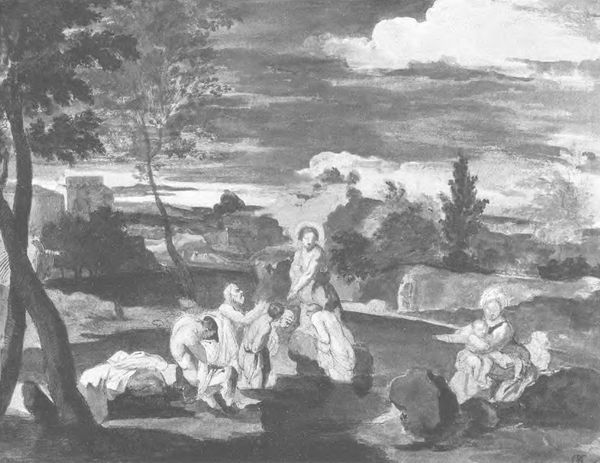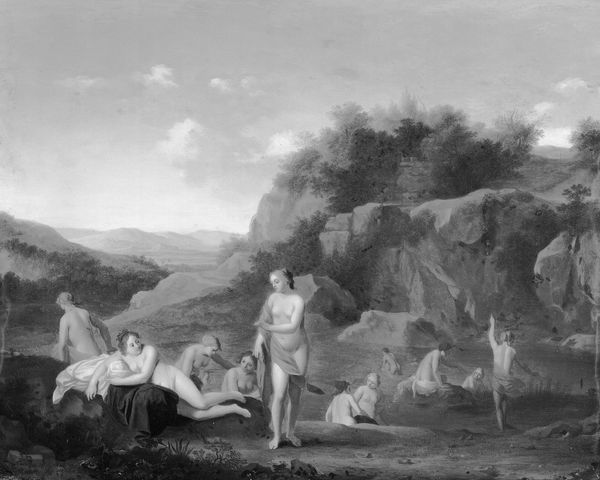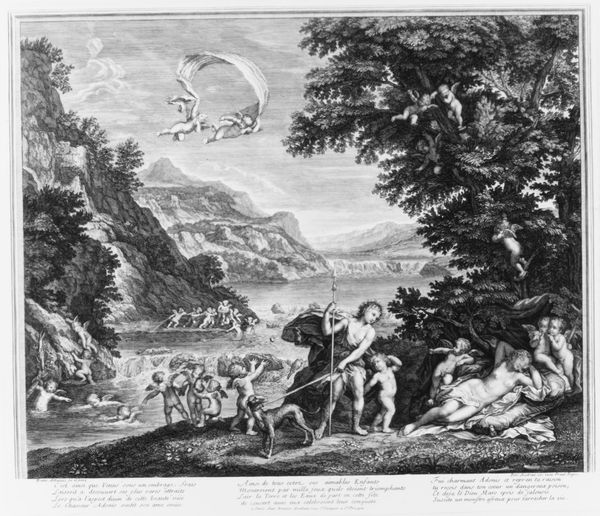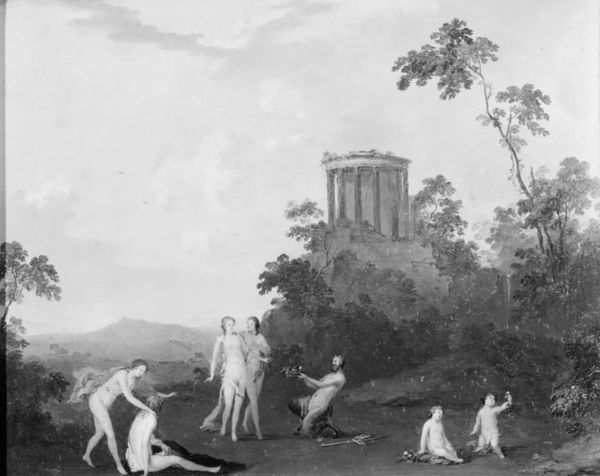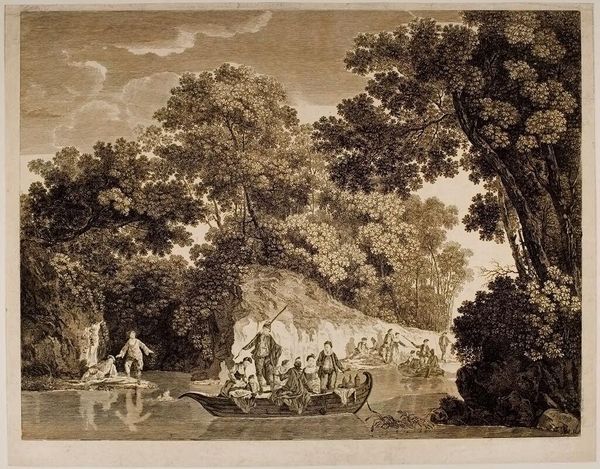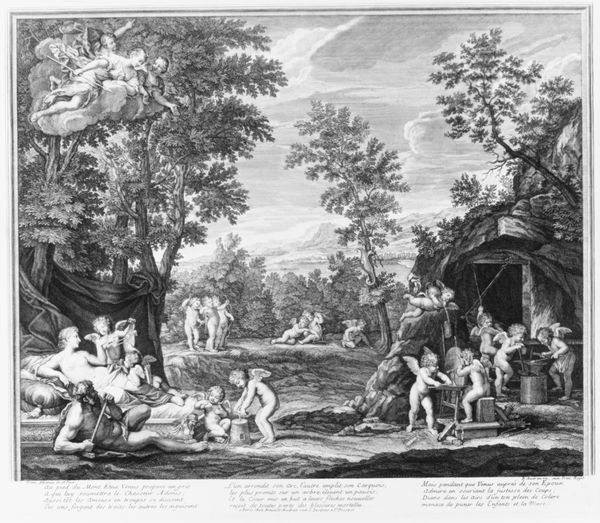
painting
#
allegory
#
baroque
#
painting
#
landscape
#
figuration
#
black and white
#
monochrome
#
nude
#
monochrome
Dimensions: 26 cm (height) x 33.5 cm (width) (Netto)
Curator: What a scene! Roelant Savery's "Three Nymphs Dancing with a Satyr" offers a glimpse into a vibrant, imagined past. I can't help but feel drawn in by the lively composition and figures within it. Editor: My first impression is one of a kind of frenzied classicism. The nymphs cavorting in the monochrome palette of the painting suggests a dynamic tension, but I immediately wonder about the original social contexts which this kind of display could come to embody and how a painting like this could possibly function to consolidate or disrupt hegemonic norms. Curator: Precisely! It's important to contextualize the painting’s role in its time. Painted sometime between 1591 and 1639, it falls squarely within the Baroque period, so it speaks to the relationship between humans, nature and perhaps, in its monochrome representation, questions our understanding of how we understand art and social history, in general. Savery clearly borrows inspiration from classical mythology, weaving themes of dance, nature, and the somewhat licentious presence of a satyr together into a single pictorial tableau. Editor: And the political backdrop of this kind of art cannot be ignored. Works such as these become signifiers in discussions of power, identity, gender, and especially here, around race given its being expressed in monochrome which necessarily complicates our assumptions about how this interacts with identity as we know it. How was the artist's commission structured, and how might this piece fit into broader discourses surrounding female agency? Curator: That is a very valid point. When we focus on it, and through critical lenses of gender and power dynamics, there appear nuances that challenge traditional readings of mythological scenes like these. It prompts us to examine whose perspectives are amplified and whose are systematically undermined, given the painting’s monochrome character and seeming limitation thereof. Editor: I would concur; it becomes a study in the aesthetics of resistance by presenting, visually and metaphorically, restrictions, both to the creation and reception of art. The piece becomes far more compelling when understood in conjunction with contemporary societal conversations about restriction and the female nude and, in this case, the almost violent denial of expression of color or differentiation. Curator: Understanding Savery's art necessitates an investigation of art history through an activist lens that brings modern issues to light; this informs us as well as empowers different questions concerning identity and gender constructions within artworks from bygone eras. It also shows the dynamism involved within the painting itself! Editor: In the end, Savery’s monochromatic nymphs and satyr become less a mere scene and more an open invitation to reimagine the stories we've inherited and build discussions that move art toward radical potential.
Comments
No comments
Be the first to comment and join the conversation on the ultimate creative platform.
